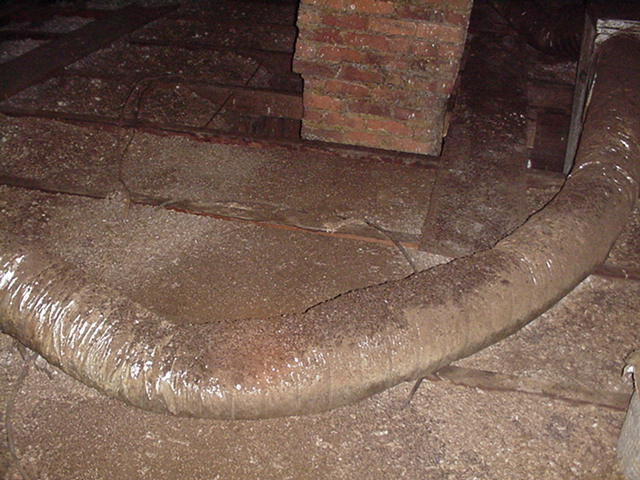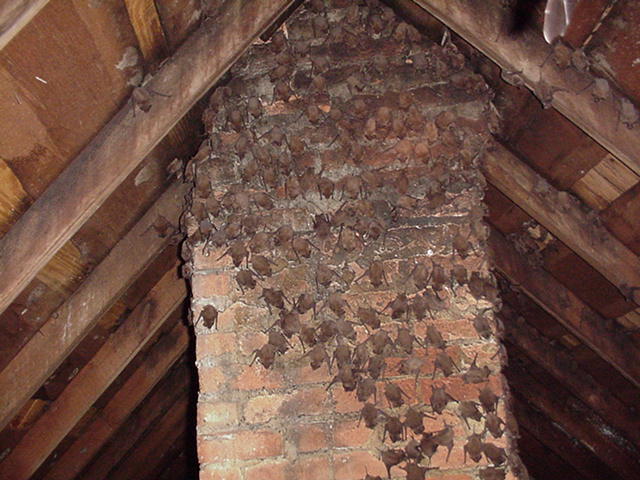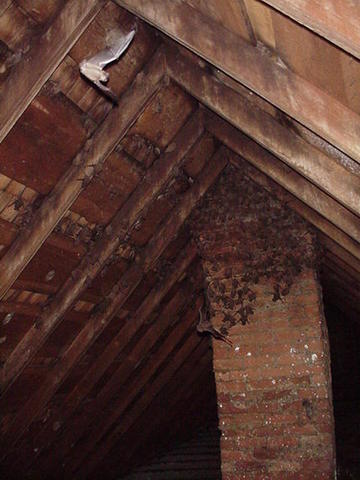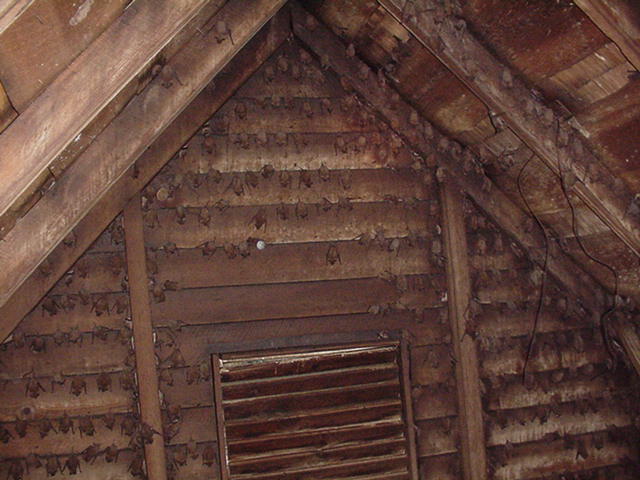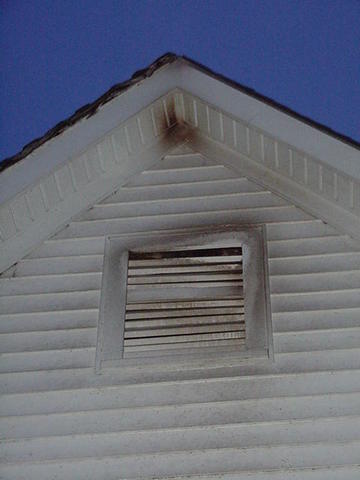I would define damage in regard to structures as a physical change to any object or material that interferes with the object or material from performing the task it was installed to perform. Examples of this would include holes in siding, missing or broken shingles, compressed insulation, bent soffit panels, etc.
The question is not if the item or material is damaged, but rather what caused the damage. If a soffit panel was removed allowing access to the roof/soffit area to raccoon, squirrels, and birds, it's hard to say the soffit is damaged as there is no physical change to the panel that was removed. However, if the panel was bent due to wildlife, construction accident, or weather and fell out, now a case can be made that damage occurred to the soffit, even if it was just the one panel.
In terms of insulation, damage will be determined by the type of insulation. Hard or spray insulation will require physical damage such as chewing or breaking whereas blown in or batt insulation will require compression or removal. The difference is because of the different insulating properties each type of insulation has. To focus on blown in and batt insulation, insulating properties occur based on air being trapped between the insulating fibers. A specific amount of insulation is required to achieve the desired R factor. This amount will be based on the type (denim, cellulose, fiberglass, etc.) of insulation being installed.
In terms of bats causing damage to insulation, it depends on multiple factors such as the type of insulation, as previously stated, the amount of insulation present, and where the damage is located (i.e., by the chimney only, along the ridge board, or throughout the entire attic). The following examples will be based on a pile of guano that is 24 inches x 8 inches x 1 inch. Starting with hard board insulation, I would argue that no damage from the guano has occurred as no physical harm to the hard board was done. However, once the guano has been removed there may be harm from urine which would be evident by staining. A very similar situation occurs with batt insulation when the backing is facing up. Although the guano does not have enough weight to compress the insulation and inhibit the insulating properties, the urine will soak into the backing and potentially into the fibers and can cause a change to the insulating properties. As for blown in insulation, I would argue that damage has occurred to the insulation from the guano as compression will have taken place along with urine damage. With all of these situations, the amount of any damage present is very small and would require only removal and replacement of that specific area with the possible exception of blown in insulation where damage is occurring when walking through the insulation to the area in question.
While the guano in the above examples is a small amount, I feel that the entire attic does not need to have the insulation removed due to bats urinating in flight. That doesn't mean that there isn't other conditions such as rodent trails, tunnels, or water damage that hasn't damaged insulation that needs removed, just that the damage wasn't caused by the bats. This is a common problem, from my perspective, that I come across every year. Two thousand plus square feet clean outs being quoted for anything from one piece of guano to several small piles each less than one square foot in size claiming that all the insulation is ruined when it isn't.
This makes it very important when writing up a proposal for a client or insurance company to make sure and justify why you feel the insulation needs removed, regardless of the damaged amount. Whatever the situation is, make sure to describe it. So list the amount of guano (very small amount to attic floor entirely covered) and if other damage is present include it by saying there is also damage from raccoon, squirrels, mice, etc. This way, you are saying that not only is this the problem you see, but also the solution to it. This helps greatly when a claims adjuster actually comes out and looks at the problem.
In terms of estimating the number of bats and/or time frame the damage occurred, understand that by giving this information you are now legally responsible to justify how you achieved that number. Having served as an expert witness in court cases regarding how many bats a structure contained and how long they were present, I can say first hand it isn't a fun experience to testify against another WCO/PCO company. The problem is the amount of droppings will depend on roost type, feeding success, amount of time using the roost, and the number of bats present.
A small colony of 10 bats over a 10 year period can give the same look as 100 bats in a single year. I've seen times where 300+ bats used a structure for less than one year leaving piles of guano that were 20 ft long 24 inches wide and 3/4 inches deep in four separate locations plus lots of individual pieces throughout a 4,000 ft attic so you could not step on the floor without stepping on guano. If this happened in 1,200 sq ft attic, you'd have a pile that was several inches deep in just a couple of months but giving it a look as if it was years of accumulation.
Generally speaking, a shotgun look to the guano can show either juvenile bats (where the maternity colony is elsewhere in the structure) or bachelor group activity whereas a sand timer look or pile accumulations revile a maternity site. To give an educated guess, not only do you need to know how many bats and how long, but you also need to know the type and amount of insulation that was present before the bat guano started. Sometimes this is very easy to know as you can see fluffy blown in insulation with an areas being pressed down with guano on top, but most of the time it isn't that simple.
If you need to provide a statement, it may be best to say that it is impossible for you to determine this information and that all you can say is what the current conditions are. Of course, if you also excluded the bats and have a good idea as to how many were using the structure you can give that information out and if the homeowner say's they've had bats for 5 years, then say "According to the homeowner..."
Last edited by WCT; 09/21/14 10:03 AM. Reason: Clarified statement



